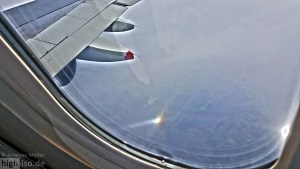Observer: Michael Heiß, Greifswald – Germany
Website of the phenomena: www.meteoros.de
The following observation was made along the motorway leading from Wadi Rum to Akaba in Jordan on December 4, 2016. At a position of 29.641553North and 35.196915 East, halo activity reached its maximum between 9:30 and 9:45 a.m. EET(East European Time). The temperature was at 14°C. After it had been clear, cloudiness now increased (Cirrus clouds).
Some fragments of the 22°-halo and both sundogs had already been visible in scattered cirrus clouds the evening before and through the morning hours. The cirrus clouds increased during the morning, becoming scattered over the whole sky by 9:30 EET. During a stop by the roadside, the whole scale of haloes could be observed. The sun was surrounded by a bright 22°-halo, both sundogs, upper tangent arc and a complete and colourful Parry arc. A faint circumzenithal arc was also visible. While the cirrus clouds spread more and more over the sky, some fragments of the parhelic circle became visible, merging to form a complete parhelic circle which was so bright that it got a brownish-red upper rim. The two characteristic bulges in the areas of the 120°degree-sundogs were also clearly visible. The highlight of the phenomenon, however, was Tricker´s anthelic arc which appeared for about 5 minutes as an accentuated “V” turned upside down opposite the sun beneath the parhelic circle. At the point where the “V” tapered, the anthelion could also be detected.
The cirrus clouds rapidly thickened, which caused most haloes to fade away. Only the 22°-halo persisted for several hours before disappearing in the afternoon.
Wegeners antihelic arc appears if the USM method is used.
All pictures are taken with a full-frame camera (Canon 6D) at a focal length of 24 millimetres.











